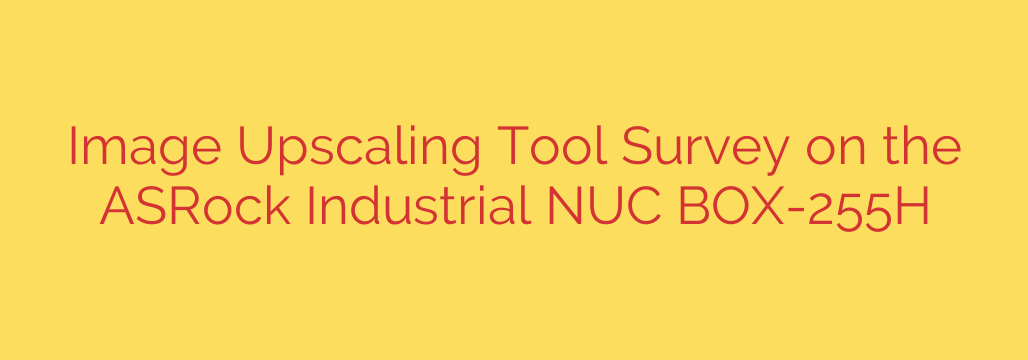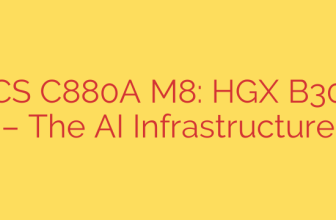
AI Image Upscaling Showdown: Free vs. Paid Tools Put to the Test
Ever found a perfect image, only to realize it’s too small, blurry, or pixelated for your project? For years, resizing a low-resolution image meant accepting a blurry, artifact-ridden result. Thankfully, the rise of artificial intelligence has introduced a new class of tools—AI image upscalers—that can intelligently add detail and increase resolution in ways that were previously unimaginable.
But with so many options available, which one actually delivers the best results? We put several of the most popular free and paid image upscaling tools to the test to see how they stack up in terms of quality, speed, and ease of use.
The Problem with Traditional Scaling
Before diving into AI, it’s important to understand why simply “enlarging” a photo in standard editing software often fails. Traditional algorithms, like Lanczos or Sinc, essentially stretch the existing pixels and try to guess what should go in between. While fast, this process almost always leads to a soft, blurry image that lacks fine detail. AI upscalers work differently by analyzing the image and using a trained neural network to generate entirely new, realistic pixels, effectively recreating the image at a higher resolution.
The Contenders: A Look at the Upscaling Tools
We tested a range of software, from professional-grade applications to free, open-source alternatives, to see how they performed on a compact PC equipped with an Intel Core i7-1255U processor and integrated Intel Iris Xe graphics.
- Topaz Gigapixel AI: Widely regarded as a professional industry standard, this is a paid application known for its powerful models that excel at adding detail and reducing noise.
- Upscayl: A popular, free, and open-source tool that provides a simple user interface for accessing powerful AI models like Real-ESRGAN. It’s designed for ease of use.
- chaiNNer: A more advanced, node-based image processing tool. It’s highly customizable and allows users to build their own upscaling workflows, but it has a steeper learning curve.
- GIMP (GNU Image Manipulation Program): A powerful free image editor. We tested its built-in scaling algorithms (NoHalo, LoHalo) to serve as a baseline for traditional, non-AI methods.
The Head-to-Head Comparison: Quality and Speed
After upscaling the same low-resolution source image by 4x with each tool, the differences were immediately clear.
For Unmatched Quality: Topaz Gigapixel AI
There’s a reason Topaz Gigapixel AI is a paid product. In our testing, it consistently delivered the sharpest, cleanest, and most detailed results. It excelled at recreating fine textures and sharp lines without introducing noticeable artifacts. Faces, text, and intricate patterns were rendered with stunning clarity. For professional photographers, graphic designers, or anyone who demands the absolute best quality, Gigapixel AI is the clear winner.
The Best Free Alternative: Upscayl
For those who don’t want to invest in paid software, Upscayl is an incredible option. Using the powerful Real-ESRGAN model, Upscayl produces results that are dramatically better than traditional methods and impressively close to the paid competition. The final image was sharp and detailed, though in some areas it had a slightly more “stylized” or painted look compared to Gigapixel AI. For hobbyists and most general use cases, the quality is more than sufficient and represents an outstanding value.
For Advanced Users: chaiNNer
chaiNNer provided results identical to Upscayl when using the same AI model, which is to be expected. Its true strength isn’t in producing a different quality of image, but in the flexibility it offers. If you need to batch process images with a complex chain of operations (e.g., upscale, then apply a filter, then adjust colors), chaiNNer is the tool for you. For a simple one-off upscale, it’s overkill.
The Traditional Baseline: GIMP
As expected, GIMP’s traditional scaling algorithms could not compete with the AI-powered tools. While the process was nearly instantaneous, the resulting image was significantly blurrier and lacked the fine detail that the AI tools were able to generate. This confirms that for high-quality enlargements, AI-based solutions are unequivocally superior.
Do You Need a Supercomputer for AI Upscaling?
One of the most surprising takeaways was the hardware performance. All tests were conducted on an ASRock Industrial NUC BOX-1255H, a compact mini-PC running integrated Intel Iris Xe graphics—not a high-end workstation with a dedicated NVIDIA GPU.
While dedicated GPUs with CUDA cores will always be faster, the Intel Iris Xe graphics handled the AI workload admirably. The upscaling processes were completed in a very reasonable timeframe, proving that you no longer need an expensive, high-end gaming PC to achieve excellent AI upscaling results. This makes the technology far more accessible to everyday users.
Final Verdict and Recommendations
Choosing the right image upscaler depends entirely on your needs and budget.
- For Professionals and Perfectionists: Topaz Gigapixel AI is worth the investment. Its best-in-class algorithms produce the most detailed and natural-looking results.
- For Most Users and Hobbyists: Upscayl is the top recommendation. It’s free, easy to use, and delivers fantastic quality that will be more than enough for social media, personal projects, and even some professional work.
- For Technical Users and Custom Workflows: chaiNNer offers unparalleled flexibility for those who need to build custom image processing pipelines.
- For Quick, Basic Enlarging: If quality is not a primary concern and speed is everything, traditional tools like GIMP still have a place, but they should not be used when detail preservation is important.
Source: https://www.linuxlinks.com/survey-image-upscaling-tools-asrock-industrial-nuc-box-255h/








